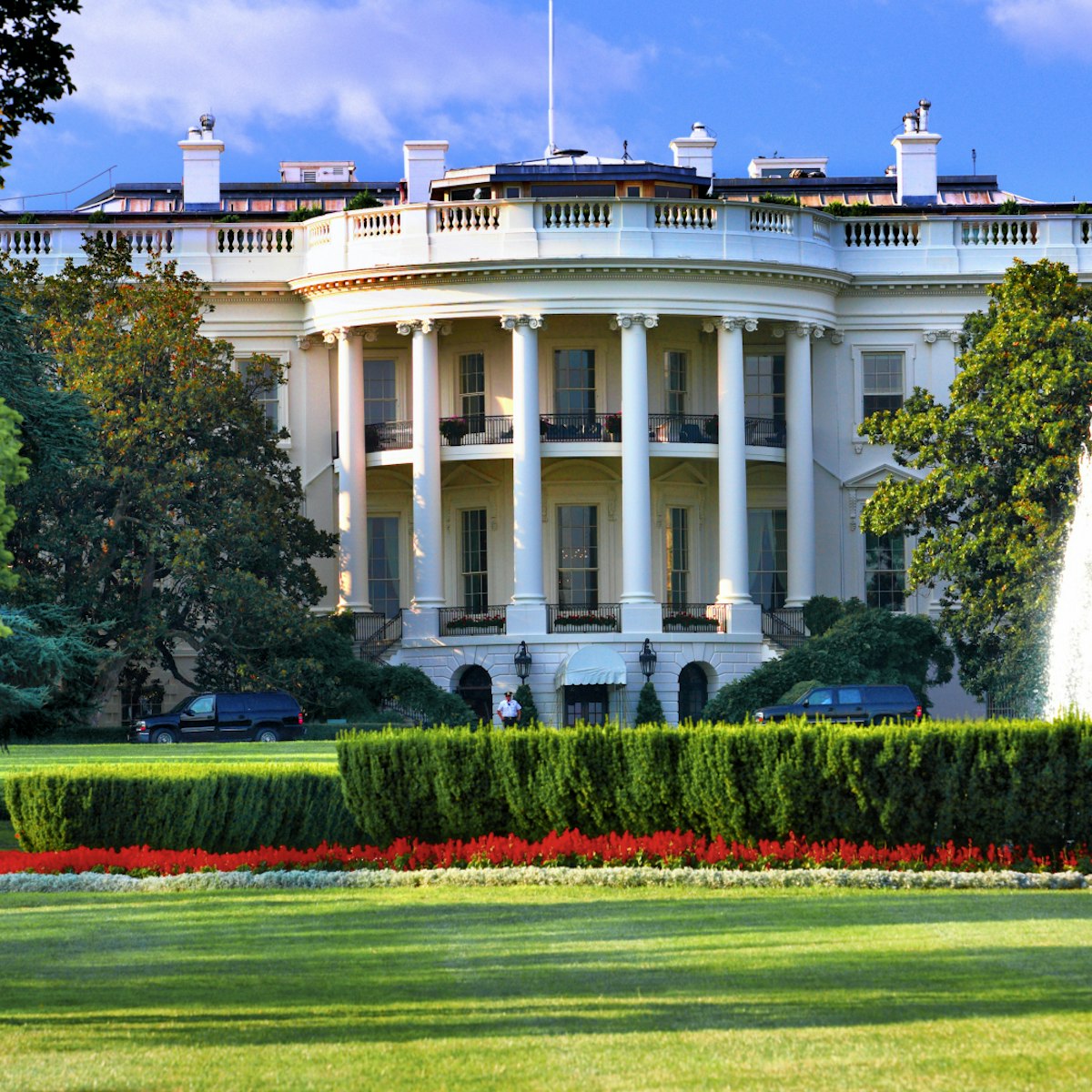The gracefully domed, white-marble Thomas Jefferson Memorial is all about the man himself, an accomplished architect, political philosopher and, notably, the third president of the United States.¬Ý
Here you’ll find Jefferson’s stately bronze statue and his most famous quotes etched on the memorial’s interior walls. You’ll also find a nod to arguably his greatest achievement: his statue holds in its hands the Declaration of Independence, the document, which he largely wrote, that serves as the basis for American democracy (though, at the time, this was reserved only for educated white males).
Come here to ponder Jefferson’s words, visit the small museum and relax on its steps, taking in the cherry-tree-fringed Tidal Basin in one of DC’s classic scenes. Its glowing marble dome is especially striking at night.
History of Jefferson Memorial
The memorial was President Franklin Roosevelt’s idea, who in 1934 contacted the Commission of Fine Arts about memorializing the president he greatly admired. Famous architect John Russell Pope designed the memorial, with later modifications by the architectural firm of Otto R. Eggers and David R. Higgins. The circular, open-air structure with its 26 Ionic columns – reflecting the number of states in the Union when Jefferson died – was styled after Rome’s Parthenon, the same classical structure that inspired Jefferson’s beloved Monticello and the University of Virginia Rotunda. Much care was given to ensure the memorial’s placement along the National Mall’s north-south axis, aligning with the White House and the Washington Monument.
Construction took place between 1939 and 1943 on reclaimed land along the Tidal Basin. Frederick Law Olmsted, Jr., designer of Central Park, oversaw the design of the surrounding setting, including a circular driveway on its southern side. President Roosevelt dedicated the memorial on April 13, 1943 ‚Äì the 200th anniversary of Jefferson‚Äôs birth ‚Äì ending his tribute with Jefferson‚Äôs prophetic words: ‚ÄúI have sworn upon the altar of God, eternal hostility against every form of tyranny over the mind of man.‚Äù The one thing missing was the bronze statue; with a wartime ban on the use of metals, a plaster model was used until the real one, sculpted by Rudolph Evans, replaced it in 1947.¬Ý¬Ý
Controversies
And, of course, there were controversies. Some argued the monument’s chosen site, south of the White House, didn’t mesh with L’Enfant’s original plan to keep the vista open. Others felt the monument was too grandiose for Jefferson, who didn’t even list “president” as one of his accomplishments on his tombstone. When construction started in 1938, 50 women marched to the White House to protest the removal of cherry trees, a gift from Japan; some chained themselves to a tree in an incident that became known as the “Cherry Tree Rebellion.”
Highlights of the Jefferson Memorial
Walk up the stairs to the airy, white-marble interior and its statue of Jefferson. The interior walls are etched with words from various Jefferson texts. One expounds on the right to religious freedom, and another conveys the importance of changing laws to represent changing times. The most powerful words, however, are taken from the Declaration of Independence: "We hold these truths to be self-evident: that all men are created equal, that they are endowed by their Creator with certain inalienable rights, among these are life, liberty, and the pursuit of happiness."
Downstairs you’ll find a , a small museum and restrooms.
From the memorial, paths take off through the cherry-tree-dotted surroundings, along the Tidal Basin, making for a pleasant stroll – notably in spring, when the trees explode in clouds of fluffy pink and white.
Annual events at the Jefferson Memorial
A variety of festivities take place at the memorial throughout the year, including Memorial Day exercises, Easter sunrise services and the Cherry Blossom Festival. Check the website for details.
Did you know?
The Tidal Basin once was a popular swimming spot, including a diving platform and a cabana. It was for white people only, and Congress approved funding for a similar spot for African-Americans. After debate intensified, the Tidal Basin was closed to everyone instead.
Essential info
The monument is free to enter. It can be reached easily by public transport, using the Metro. The closest stop is Smithsonian, on the orange, blue and silver lines. Additionally, buses: 32, 34 and 36 stop at the Memorial, as does the DC Circulator bus.










